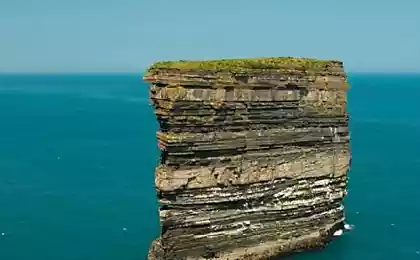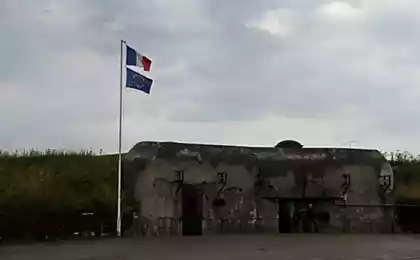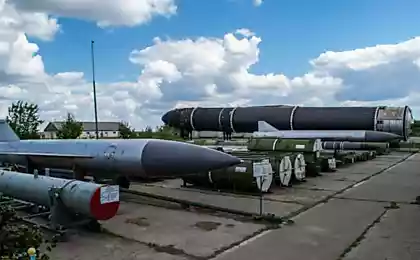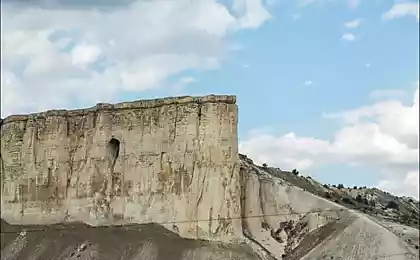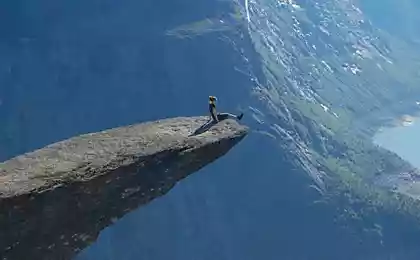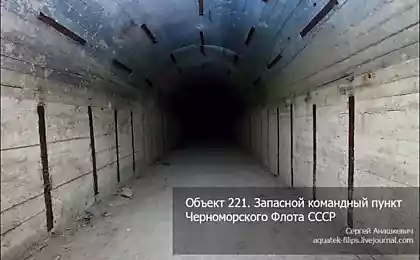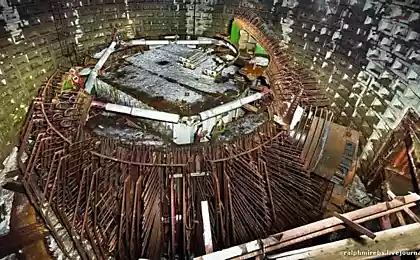911
The command post "The Rock"
GPS coordinates command post Korosten strengthen District №5 «Rock» 50 ° 56'50 "N 28 ° 38'54" E (wikimapia) - landmarks in the park to them. Ostrovsky and school №2.
In the 1930s along the western "old" (ie until 1939) the borders of the USSR was based nodal system of fortifications, which consisted of fortified from the Karelian Isthmus to the shores of the Black Sea. While in the Soviet Union, these fortifications was never officially called the "Stalin Line", the name stuck them through the German propaganda and Western media.
31 ph + letter © Akim Boyko
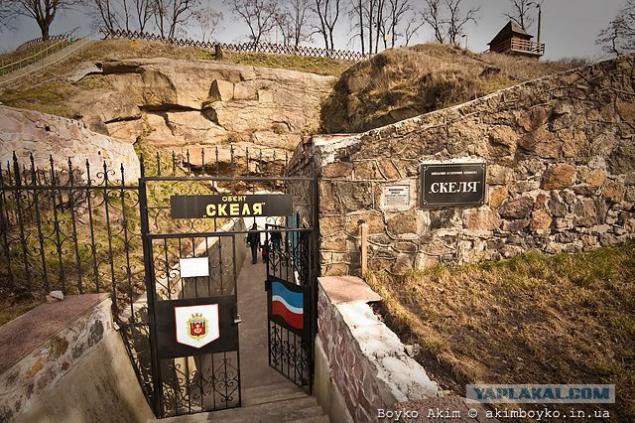
The construction of "Stalin Line»
Construction of the first thirteen fortified areas (SD) began in 1928: Karelia, Kingisepp, Pskov, Polotsk, Minsk, Mozyr, Korosten, Kiev, Novograd-Volyn, Letichevsky, Mogilev-Podolsky, Rybnitsa, Tiraspol fortifications.
In 1938 it began the construction of eight new More Urs between already existing: Ostrovsky, Sebezh, Slutsky, Shepetivka, Izyaslav, Old Constantine, Ostropolsky, Kamenetz-Podolsk fortifications. However, their construction has not been completed due to the shift in 1939 the state border to the West.
After joining the Soviet Union in 1939-40 Western Belarus and Western Ukraine, the Baltic republics and Bessarabia - «Stalin Line" was suspended, and about 300 kilometers to the west began to build a new "Molotov Line».
Fortified by Korosten was the largest after Minskomogo SD. It consisted of 455 long-term defensive machine-gun point - bunkers, which are occupied by the front of 120 km. Despite the fact that it was called Korosten, its headquarters was located in Belokorovichi. But in the Korosten on maps marked "Top Secret," is only one object - w / e bridge.
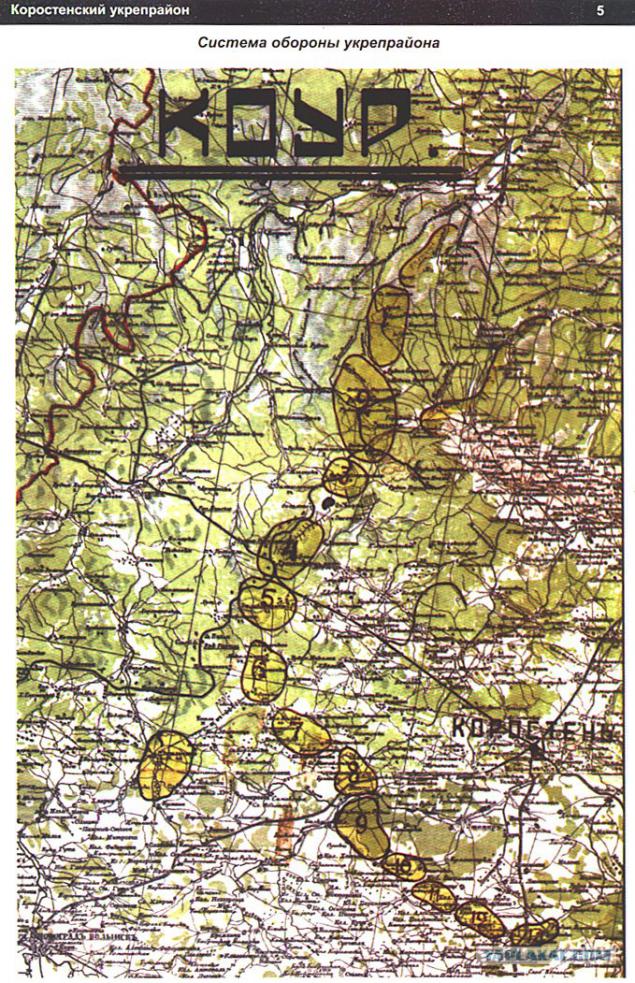
In high security mode from 1935 to 1938 in the center of Korosten in the natural granite caverns under the leadership of General Dmitry Karbysheva it was built command center "The Rock" for the future of South-Western Front. Just work on Korosten, Kiev and Novograd Volyn Ur led Nikita Khrushchev. He also commissioned the construction of tunnels under the Dnieper in Kiev.
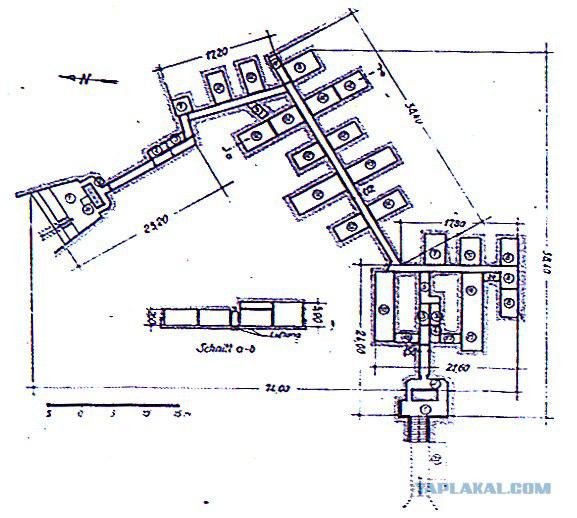
All available today schema object based on copies of documents obtained by German intelligence in 1938 (despite the fact that the object is a top-secret) and the measurement made by German engineers in the 1941-42 year. According to archive request in the central Russian Defense Ministry archives any documents of KP "The Rock" is not.
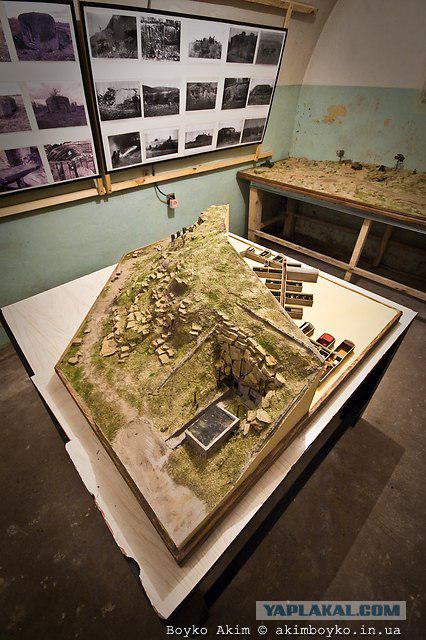
The property consists of three levels, it is now available for visits only average. The total length of the corridors average - 146 meters, the estimated upper 200 meters of the ground almost unknown. Transitions from the middle to the other levels were concreted in 1941, in addition there is information that the upper and lower levels are also mined - this is one of the reasons why the Germans did not use the facility for fear of Soviet radio-controlled bombs. The number of rooms in height from 2, 5 to 4 m - 36, their total area - 472 m², the length of the corridor - 156 m, their width - 1, 1 meter, the total amount of the underground complex - 1121 m³. All of this is protected from possible air strikes half meter layer of concrete, 18-meter-thick layer of granite massif and 20 meters of sand and clay soil. Outside approaches camouflaged bunker and was stretched over them special protivobombnaya network (built on the principle of anti-torpedo nets that surround the ships at naval bases) - bombs were by no rebounding.
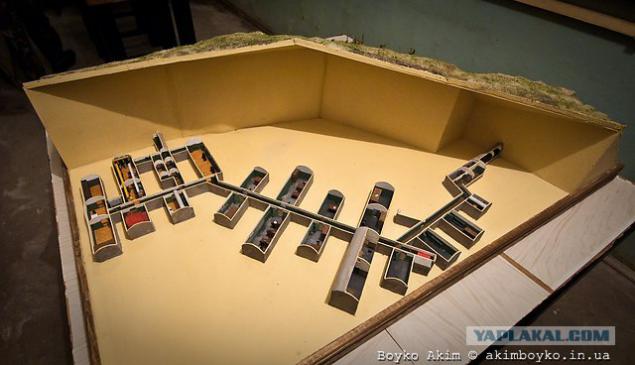
In addition, special looped lanes at the entrance, and a three-ton sesquilinear doors, vestibules degassing own source of drinking water, electricity generators, filters and air regeneration, used compressed air (air overpressure) to 40 mm water column and so on, do tank invulnerable not only of weapons of 30s, but also allows you to survive a nuclear conflict.
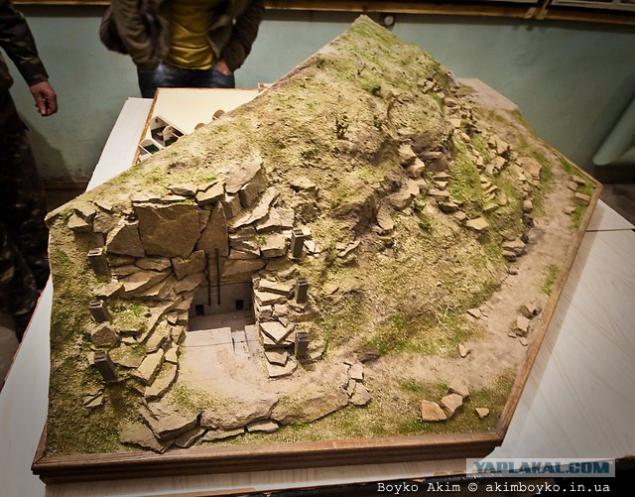
Polutoro- and trёhtonnye door at the entrance to the bunker. At the entrance to the corridor specifically forks and has two polutoratonnye doors - in the case of a direct hit by the shock wave goes around and come through the parallel corridor or extinguish itself without falling into the interior.
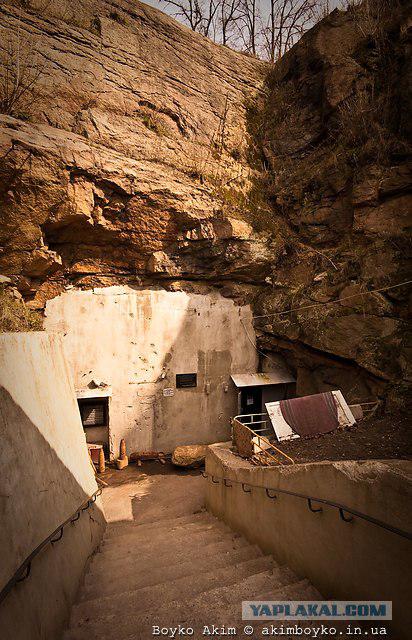
...
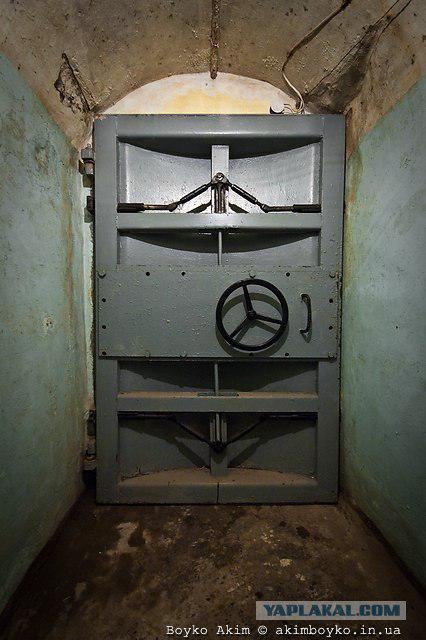
Before entering the vestibule of degassing, the employee is completely stripped, held a special shower, and then the new clothing comes into the underground complex. All these procedures not only provide protection against chemical and biological weapons, but also allow it to control anything "extra" is not entered
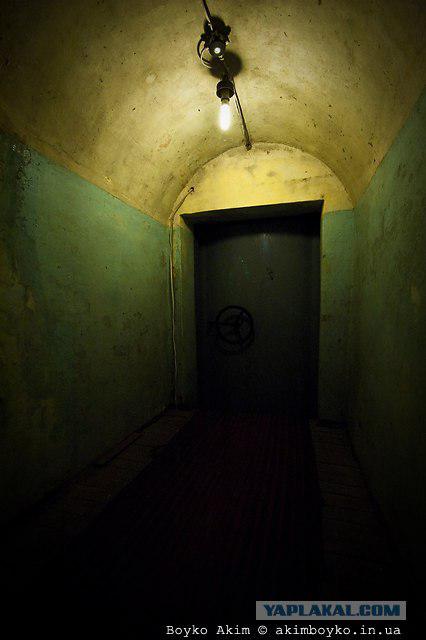
...

...

...
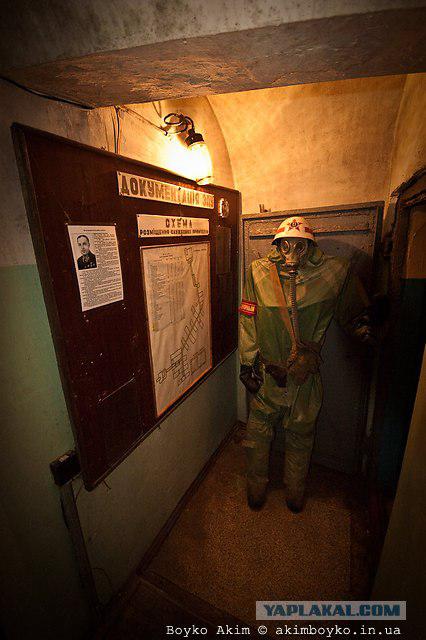
In addition to an artesian well, the complex is equipped with two storage systems and water treatment: drinking and service. Tanks for drinking water is covered from the inside with silver, and cranes placed so low that they allow to draw water only into jars or cups. This is done to ensure that drinking water would be used only for its intended purpose.
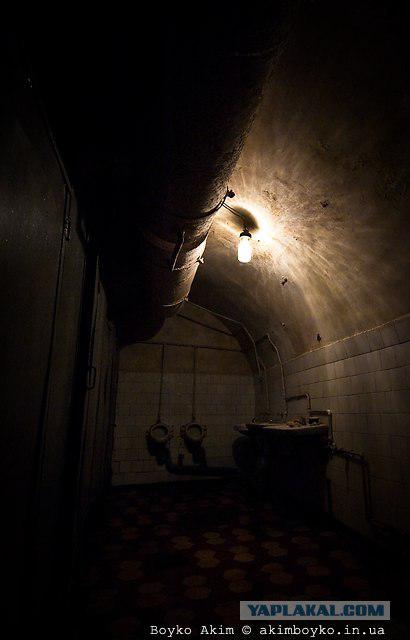
...

...
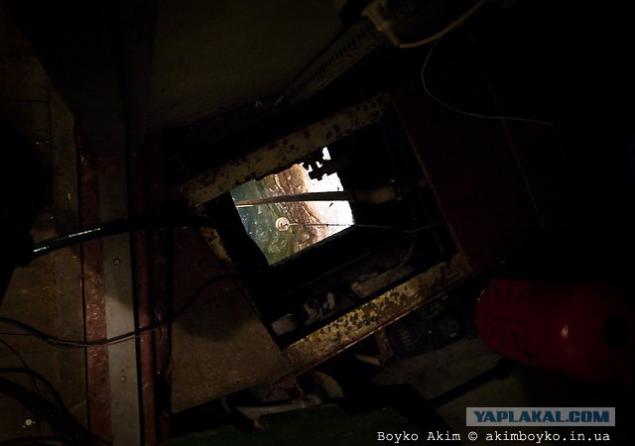
Independent ventilation, air purification and regeneration. It works both on the motor and the hand-drawn. Among other things, allows to increase the pressure in the hopper to 40 atmospheres, to prevent the entry of toxic substances in the complex.
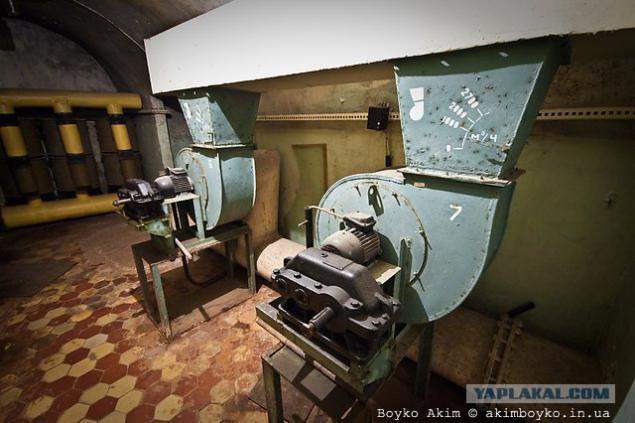
...
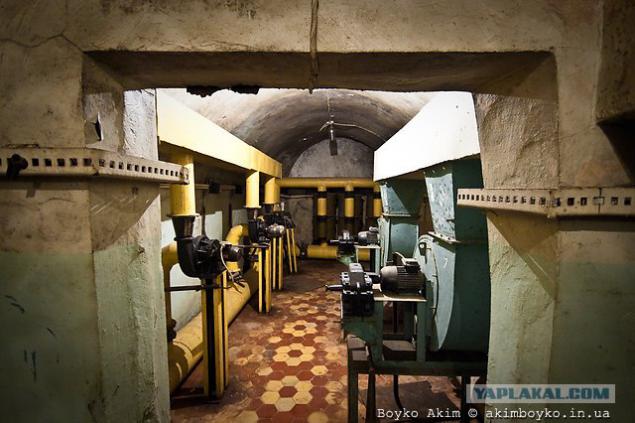
...
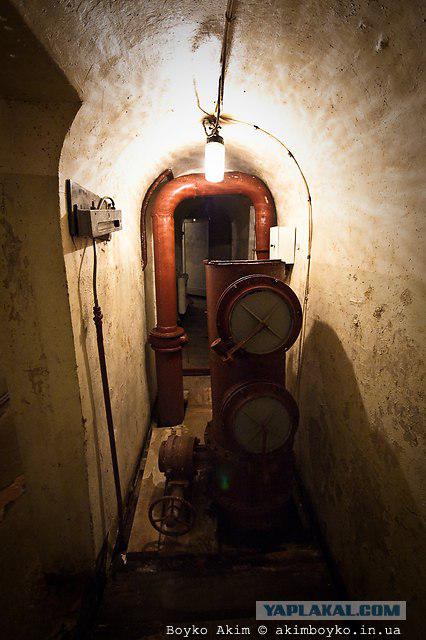
Now the bunker placed local museum of Civil Defense, in addition to the standard collection which includes masks
masks carrying infants combined with a "cosmetic bag"
mask with the opportunity to talk
Combined with a regenerator mask for underwater
gas mask for horses
special mask for cows crossing the affected area
Special railway semaphore to indicate night infected area

...
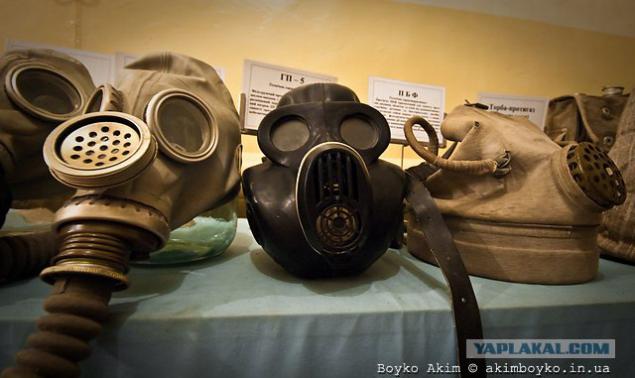
...

...
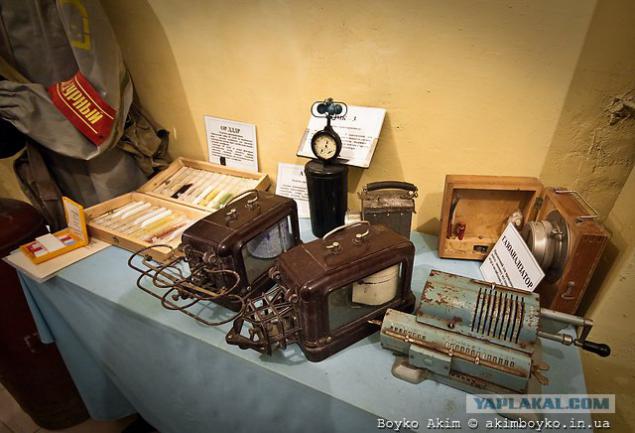
...
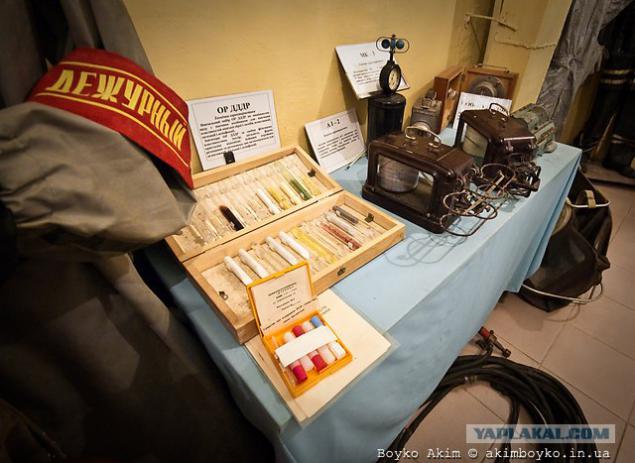
...
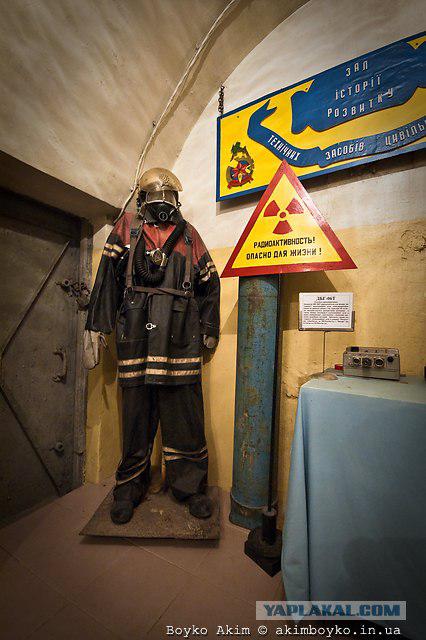
...
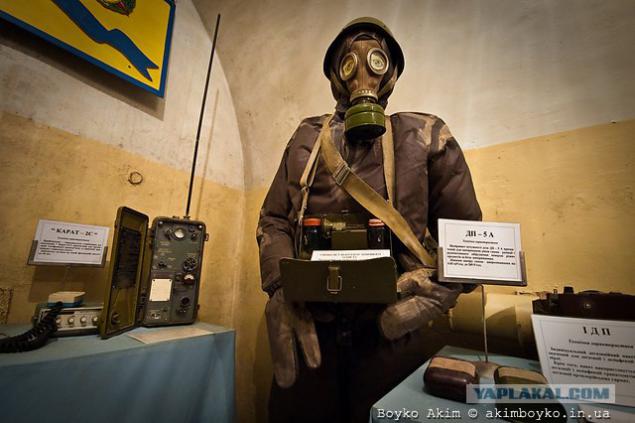
...
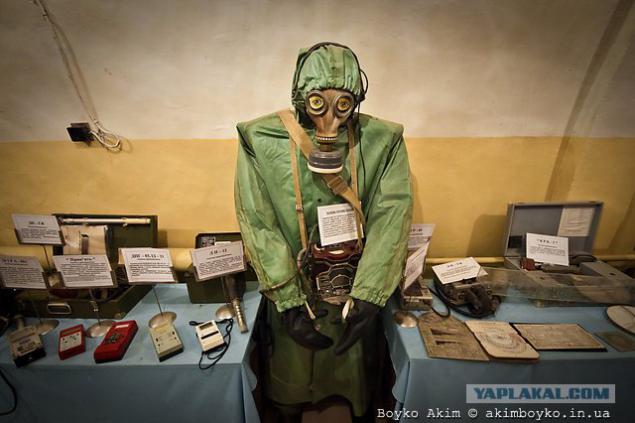
...
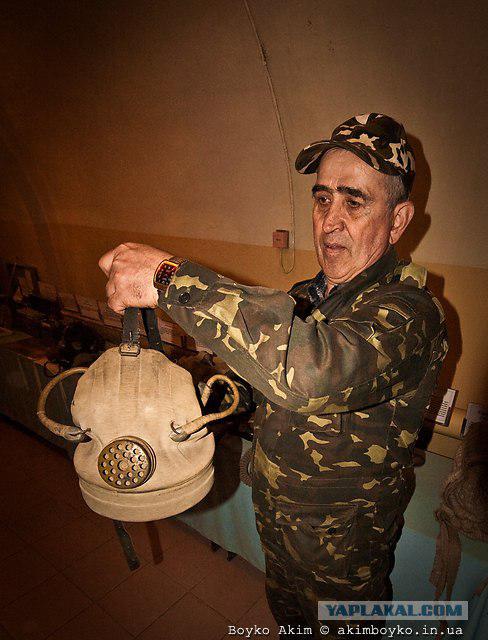
...
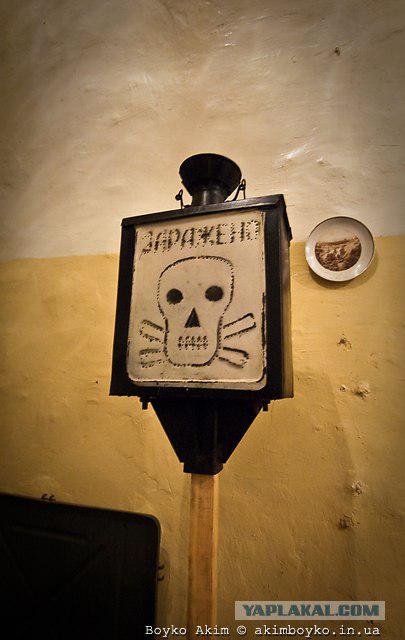
and many other interesting exhibits
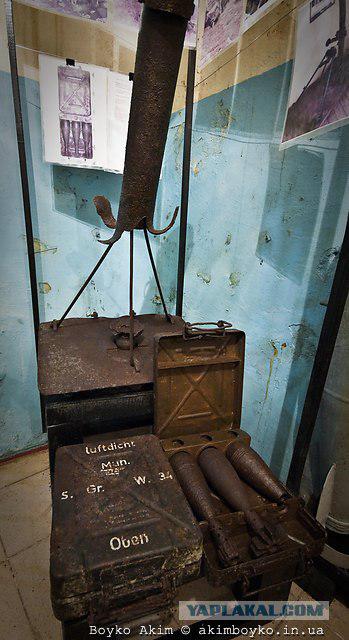
...
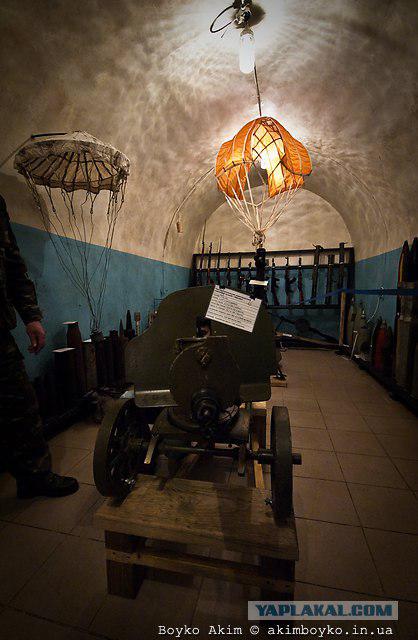
In addition to the arsenal of the command post of the Soviet and German weapons, items of equipment bunkers and other artifacts of the war years (as obtained from the stores and found during excavations in the KoUR'e) are:
Lend-lease Thomson comes in the Soviet Union, complete with American tanks
Maxim machine gun system - only the new warehouse
a large collection of all kinds of mines
broneliste original loophole to be removed from the machine-gun bunker
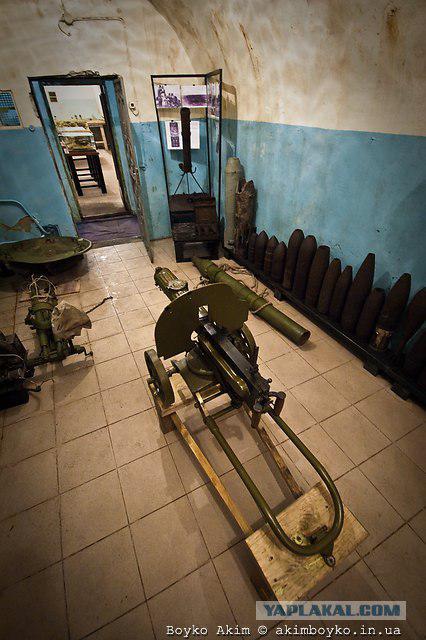
...
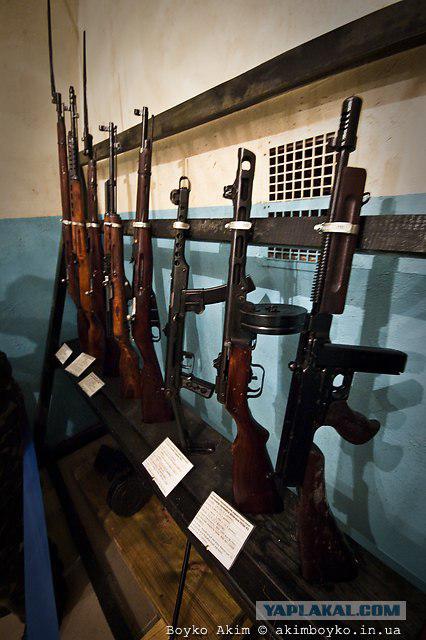
...
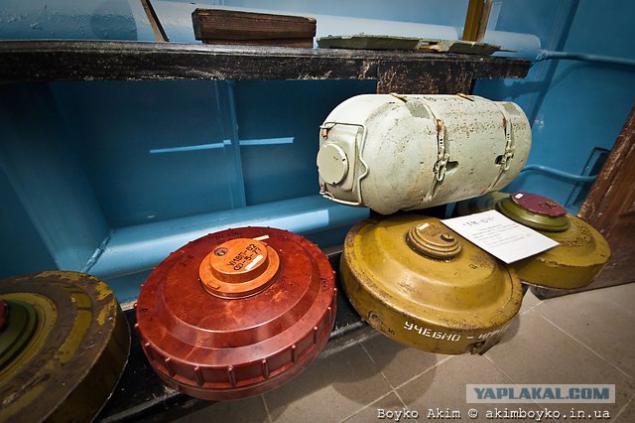
And the most interesting thing is that in this museum as part of a small tour you can hold in your hands a lot.
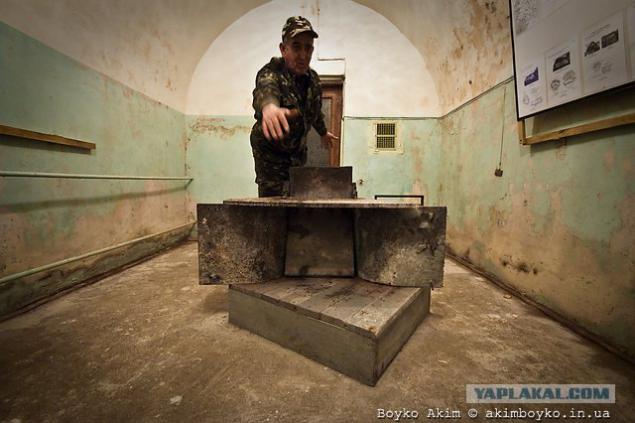
...
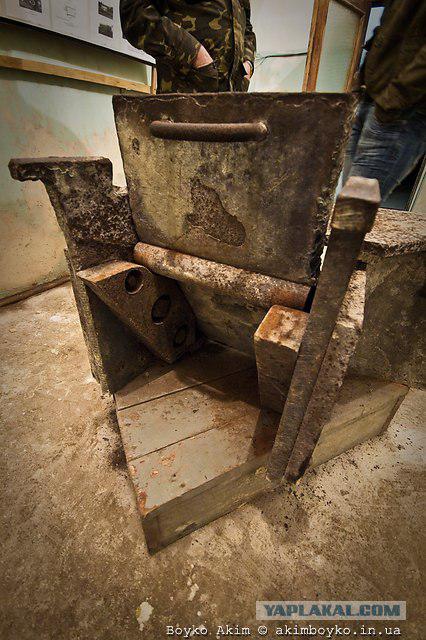
...
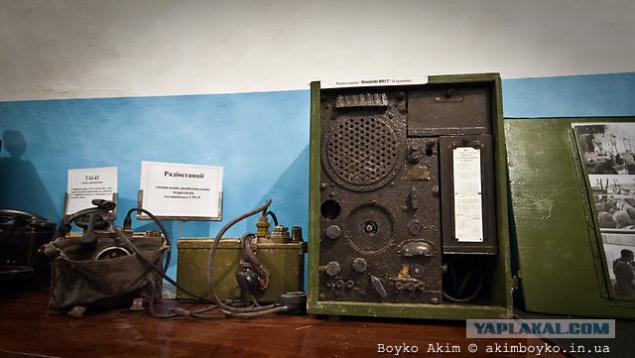
As with any other command post at the time, were the primary means of communication telephone lines that are still working. Korma communication node in the hopper has a separate room for the team with the reception. From the office also has access to the upper level set, but today it is closed. Often the tank associated with the name of Stalin, but any direct evidence indicating that the tank was built for him there. Also on the second level, there is no middle inflicted by the Germans on the plan a secret room. Now it is empty, it is assumed that there was supposed to be a cryptographer.
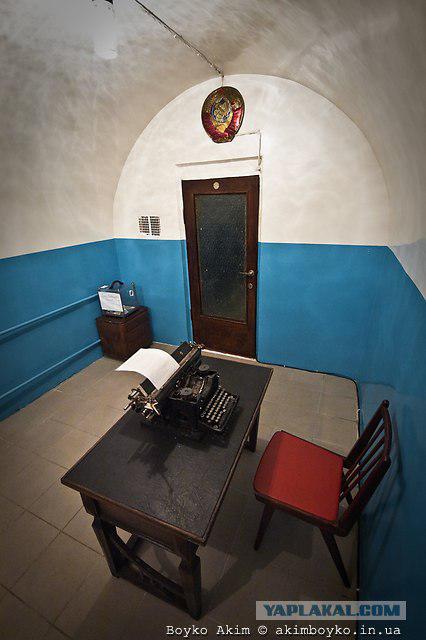
...
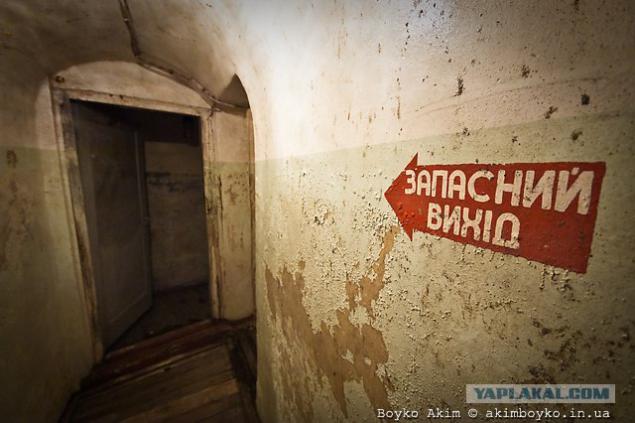
All - out)))
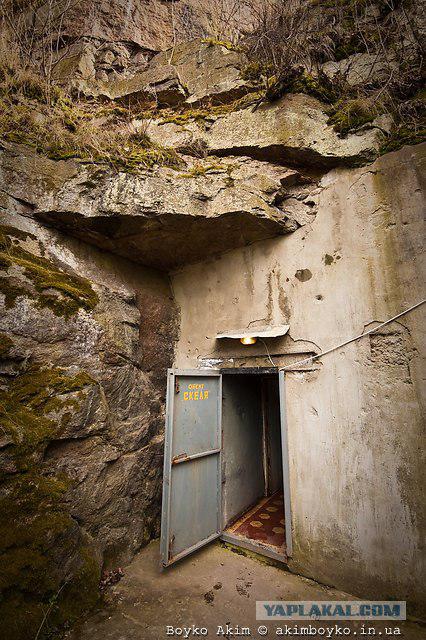
Source:
In the 1930s along the western "old" (ie until 1939) the borders of the USSR was based nodal system of fortifications, which consisted of fortified from the Karelian Isthmus to the shores of the Black Sea. While in the Soviet Union, these fortifications was never officially called the "Stalin Line", the name stuck them through the German propaganda and Western media.
31 ph + letter © Akim Boyko

The construction of "Stalin Line»
Construction of the first thirteen fortified areas (SD) began in 1928: Karelia, Kingisepp, Pskov, Polotsk, Minsk, Mozyr, Korosten, Kiev, Novograd-Volyn, Letichevsky, Mogilev-Podolsky, Rybnitsa, Tiraspol fortifications.
In 1938 it began the construction of eight new More Urs between already existing: Ostrovsky, Sebezh, Slutsky, Shepetivka, Izyaslav, Old Constantine, Ostropolsky, Kamenetz-Podolsk fortifications. However, their construction has not been completed due to the shift in 1939 the state border to the West.
After joining the Soviet Union in 1939-40 Western Belarus and Western Ukraine, the Baltic republics and Bessarabia - «Stalin Line" was suspended, and about 300 kilometers to the west began to build a new "Molotov Line».
Fortified by Korosten was the largest after Minskomogo SD. It consisted of 455 long-term defensive machine-gun point - bunkers, which are occupied by the front of 120 km. Despite the fact that it was called Korosten, its headquarters was located in Belokorovichi. But in the Korosten on maps marked "Top Secret," is only one object - w / e bridge.

In high security mode from 1935 to 1938 in the center of Korosten in the natural granite caverns under the leadership of General Dmitry Karbysheva it was built command center "The Rock" for the future of South-Western Front. Just work on Korosten, Kiev and Novograd Volyn Ur led Nikita Khrushchev. He also commissioned the construction of tunnels under the Dnieper in Kiev.

All available today schema object based on copies of documents obtained by German intelligence in 1938 (despite the fact that the object is a top-secret) and the measurement made by German engineers in the 1941-42 year. According to archive request in the central Russian Defense Ministry archives any documents of KP "The Rock" is not.

The property consists of three levels, it is now available for visits only average. The total length of the corridors average - 146 meters, the estimated upper 200 meters of the ground almost unknown. Transitions from the middle to the other levels were concreted in 1941, in addition there is information that the upper and lower levels are also mined - this is one of the reasons why the Germans did not use the facility for fear of Soviet radio-controlled bombs. The number of rooms in height from 2, 5 to 4 m - 36, their total area - 472 m², the length of the corridor - 156 m, their width - 1, 1 meter, the total amount of the underground complex - 1121 m³. All of this is protected from possible air strikes half meter layer of concrete, 18-meter-thick layer of granite massif and 20 meters of sand and clay soil. Outside approaches camouflaged bunker and was stretched over them special protivobombnaya network (built on the principle of anti-torpedo nets that surround the ships at naval bases) - bombs were by no rebounding.

In addition, special looped lanes at the entrance, and a three-ton sesquilinear doors, vestibules degassing own source of drinking water, electricity generators, filters and air regeneration, used compressed air (air overpressure) to 40 mm water column and so on, do tank invulnerable not only of weapons of 30s, but also allows you to survive a nuclear conflict.

Polutoro- and trёhtonnye door at the entrance to the bunker. At the entrance to the corridor specifically forks and has two polutoratonnye doors - in the case of a direct hit by the shock wave goes around and come through the parallel corridor or extinguish itself without falling into the interior.

...

Before entering the vestibule of degassing, the employee is completely stripped, held a special shower, and then the new clothing comes into the underground complex. All these procedures not only provide protection against chemical and biological weapons, but also allow it to control anything "extra" is not entered

...

...

...

In addition to an artesian well, the complex is equipped with two storage systems and water treatment: drinking and service. Tanks for drinking water is covered from the inside with silver, and cranes placed so low that they allow to draw water only into jars or cups. This is done to ensure that drinking water would be used only for its intended purpose.

...

...

Independent ventilation, air purification and regeneration. It works both on the motor and the hand-drawn. Among other things, allows to increase the pressure in the hopper to 40 atmospheres, to prevent the entry of toxic substances in the complex.

...

...

Now the bunker placed local museum of Civil Defense, in addition to the standard collection which includes masks
masks carrying infants combined with a "cosmetic bag"
mask with the opportunity to talk
Combined with a regenerator mask for underwater
gas mask for horses
special mask for cows crossing the affected area
Special railway semaphore to indicate night infected area

...

...

...

...

...

...

...

...

...

and many other interesting exhibits

...

In addition to the arsenal of the command post of the Soviet and German weapons, items of equipment bunkers and other artifacts of the war years (as obtained from the stores and found during excavations in the KoUR'e) are:
Lend-lease Thomson comes in the Soviet Union, complete with American tanks
Maxim machine gun system - only the new warehouse
a large collection of all kinds of mines
broneliste original loophole to be removed from the machine-gun bunker

...

...

And the most interesting thing is that in this museum as part of a small tour you can hold in your hands a lot.

...

...

As with any other command post at the time, were the primary means of communication telephone lines that are still working. Korma communication node in the hopper has a separate room for the team with the reception. From the office also has access to the upper level set, but today it is closed. Often the tank associated with the name of Stalin, but any direct evidence indicating that the tank was built for him there. Also on the second level, there is no middle inflicted by the Germans on the plan a secret room. Now it is empty, it is assumed that there was supposed to be a cryptographer.

...

All - out)))

Source:
